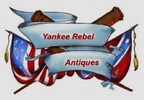 Loading... Please wait...
Loading... Please wait...-
Call us on (973) 810-2976
- My Account
- Gift Certificates
- Items / $0.00
All prices are in All prices are in USD
Categories
- Home
- Medical Related Items
- Revolutionary War Medical Bleeding Bowl and Bleeder instrument
- Home
- Identified Artifacts
- Revolutionary War Medical Bleeding Bowl and Bleeder instrument
- Home
- Non-excavated Artifacts
- Revolutionary War Medical Bleeding Bowl and Bleeder instrument
- Home
- Personal Items
- Revolutionary War Medical Bleeding Bowl and Bleeder instrument
- Home
- Late 18th Century / Early 19th Century
- Revolutionary War Medical Bleeding Bowl and Bleeder instrument
- Home
- Revolutionary War items
- Revolutionary War Medical Bleeding Bowl and Bleeder instrument
Revolutionary War Medical Bleeding Bowl and Bleeder instrument
Product Description
These are more early pieces coming out of a 60-year collection of French & Indian War, Revolutionary War, and War of 1812 artifacts. Much of the collection was artillery related, but also there is a large portion of personal and medical items. Being offered are an 18th century Medical Bleeding Bowl and a Three-blade bleeder.
The bowl is pewter measuring 5” x 7 ¾” and 1 ½” deep and has the proof mark of an anchor – usually indicating that it was British. The “Anchor” hallmark was first used in the 16th century in England. It was a mark used by the British Government to certify that the item was of stability & real reliability. There is a ring on the back for hanging. The Bleeder (or Fleam) is made of horn and has three well-worn blades. The overall size when closed is 4” x 1 ¼” x ¾”.
The Bleeding Bowl has a cut-away for placing it into the crook of the elbow (the most common place for blood-letting). Barbers also used these bowls in the 18th Century; the semicircular opening in the rim allows it to fit closely against the neck of the person being shaved, permitting his chin to reach over the bowl.
18th century barbers also undertook minor surgery and dentistry, and many of them travelled round the country as itinerant physicians. Bloodletting was common during the Revolutionary War, even into the Civil War.
Not so much in the Civil War, but during the Revolutionary War most officers and men were clean shaven. General Washington was deeply concerned about grooming in camp. His orders contained strict guidelines to keep soldiers short-haired and clean-shaven. This was not just to improve the professional appearance of the army; it was to prevent the spread of lice.
The bleeder or [fleam] was used to pierce the skin to release “bad blood”. Many surgeons continued the practice of bloodletting, simply because they had no other answer for treating the wounded or ill soldier. It can safely be said that this practice never benefited the patient and, in many cases, did more harm by causing infection.
This collection began in the late 1950s and was created by private acquisitions, closed museums, diggers, and lake divers. The collector meticulously displayed and cataloged every piece along with any known provenance.
This is the first time these items have been on the open market. They definitely merits a place in an advanced collection or museum. As with all the pieces in this esteemed collection, a Certificate of Authenticity will be included. These pieces would make a great addition to any period display.



